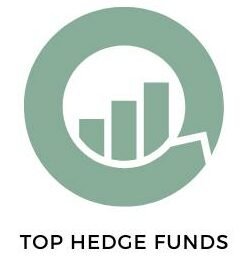Interest rates play a crucial role in the global economy, influencing everything from consumer spending to corporate investment. For hedge funds, current macroeconomic trends related to interest rates can significantly impact performance. In this blog, we’ll explore how interest rates affect hedge fund strategies and returns, especially in today’s economic climate.
Understanding Interest Rates and Their Role
Interest rates refer to the cost of borrowing money, typically expressed as a percentage of the principal loan amount. Central banks, such as the Federal Reserve in the U.S., set benchmark interest rates, which influence overall market rates. Changes in these rates can have wide-ranging implications for financial markets, including hedge funds.
1. Impact on Borrowing Costs
When interest rates rise, borrowing costs increase for both consumers and businesses. This can lead to reduced spending and investment, impacting economic growth. For hedge funds, higher borrowing costs can affect their leverage strategies. Many funds use borrowed capital to amplify returns; thus, increased interest rates can squeeze profit margins.
Key Points:
- Higher Costs: Increased borrowing can reduce profitability.
- Leverage Risks: Funds reliant on leverage may face challenges in a high-rate environment.
2. Influence on Equity Markets
Interest rates are inversely related to equity market performance. Generally, as rates rise, stock prices may decline, as higher rates often lead to increased discount rates for future cash flows. Hedge funds that employ long/short equity strategies must navigate these dynamics carefully, adjusting their positions based on anticipated market movements.
Key Points:
- Equity Valuation: Rising rates can lead to lower stock valuations.
- Strategic Adjustments: Funds may shift their long and short positions based on rate trends.
3. Effect on Fixed Income Investments
For hedge funds that focus on fixed income, interest rates are a primary driver of performance. When rates rise, bond prices typically fall, leading to potential losses for bondholder funds. Conversely, when rates are low, existing bonds with higher yields become more valuable. Hedge funds must carefully manage their fixed income portfolios to mitigate interest rate risks.
Key Points:
- Bond Price Sensitivity: Rising rates can lead to capital losses.
- Yield Curves: Funds may take advantage of yield curve movements in their strategies.
4. Impact on Currency Markets
Interest rates also influence currency values. Higher interest rates can attract foreign investment, leading to currency appreciation. Hedge funds that engage in global macro strategies often capitalize on these fluctuations, trading currencies based on anticipated changes in interest rates.
Key Points:
- Currency Fluctuations: Interest rate changes impact exchange rates.
- Global Strategies: Funds may adjust currency positions to exploit rate differentials.
5. Macroeconomic Trends and Hedge Fund Strategies
Current macroeconomic trends, such as inflation and economic recovery, are closely tied to interest rate expectations. For instance, if inflation rises, central banks may increase rates to combat it, directly affecting hedge fund performance. Funds that are adept at predicting these macro trends can position themselves advantageously.
Key Points:
- Inflation Expectations: Anticipated rate hikes can inform investment strategies.
- Economic Recovery: Funds may capitalize on sectors poised to benefit from recovery phases.
Conclusion
Interest rates are a fundamental factor influencing hedge fund performance, shaping borrowing costs, equity valuations, fixed income investments, and currency markets. As macroeconomic trends evolve, hedge funds must remain agile, adapting their strategies to navigate the complexities of a changing interest rate environment. Understanding these dynamics is essential for investors looking to assess hedge fund performance and make informed decisions in the current economic landscape.













